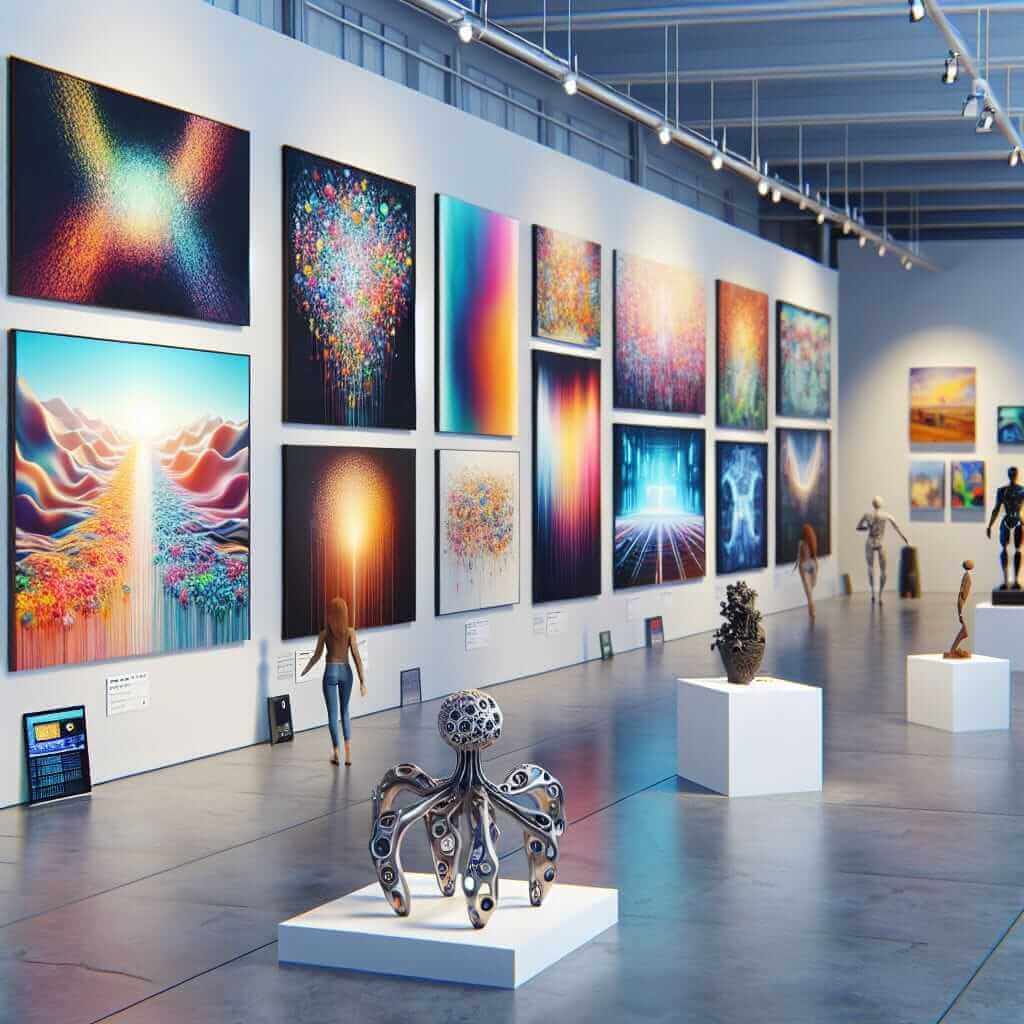Artificial intelligence (AI) is revolutionizing various industries, and creative arts are no exception. The influence of AI in creative arts has become a critical discussion point, appearing frequently in academic and professional environments. For IELTS Writing Task 2 aspirants, it’s essential to explore this topic in detail to enhance writing skills and be well-prepared for possible essay prompts.
Possible IELTS Task 2 Essay Prompts on AI and Creative Arts
- To what extent do you agree or disagree with the statement: “Artificial intelligence is diminishing the creativity in art industries”?
- Discuss the advantages and disadvantages of using artificial intelligence in creative arts.
- How is artificial intelligence transforming the creative arts sector? Provide examples to support your opinion.
Choosing a Sample Essay Prompt
For this exercise, let’s choose the second prompt: “Discuss the advantages and disadvantages of using artificial intelligence in creative arts.”
Analyzing the Prompt
This prompt requires discussing both positive and negative aspects of AI’s influence on creative arts. It’s a classic discussion essay where balanced viewpoints should be presented with supporting examples.
Sample Essay
Introduction
In contemporary times, artificial intelligence (AI) is permeating various sectors, including creative arts, leading to significant transformations. While AI has introduced numerous advancements in creative fields, it also raises certain concerns. This essay will examine both the advantages and disadvantages of integrating AI into creative arts.
Advantages of AI in Creative Arts
One of the primary benefits of AI in creative arts is the ability to enhance productivity. AI algorithms can quickly analyze large datasets and generate new musical compositions, artwork, or content, significantly reducing the time required for these processes. For instance, AI-powered tools like DeepArt and Google’s DeepDream create intricate artworks within seconds, which would typically take human artists hours or even days.
Additionally, AI fosters innovation by providing artists with new tools and mediums to express their creativity. AI programs can push the boundaries of traditional art forms, encouraging artists to experiment and create pioneering works. AI-generated art exhibits, such as those using the algorithmic creativity of GANs (Generative Adversarial Networks), have gained international acclaim for their originality and ingenuity.

Disadvantages of AI in Creative Arts
Despite its merits, AI in creative arts is not devoid of drawbacks. One significant concern is the potential erosion of originality. AI-generated works often derive from existing data, leading to debates about whether these creations are genuinely novel or mere replications of existing pieces. This raises ethical questions about authorship and creativity, challenging the traditional understanding of artistic innovation.
Moreover, the redundancy of human artists poses another critical issue. As AI technology becomes more sophisticated, there is a growing apprehension that it could render certain artistic jobs obsolete, leading to unemployment in the creative sector. This shift could have profound socio-economic implications, affecting livelihoods and the cultural fabric of society.
Conclusion
In conclusion, artificial intelligence profoundly impacts the realm of creative arts, offering substantial advantages like increased productivity and innovation. However, it also brings challenges, including potential losses in originality and job displacement. As AI continues to evolve, it is crucial for policymakers, artists, and technologists to navigate these complexities thoughtfully, ensuring a balanced integration that preserves the essence of human creativity.
Word count: 340
Key Considerations When Writing on This Topic
When discussing AI and creative arts in IELTS essays:
- Balance your arguments: Present both sides of the discussion comprehensively.
- Use specific examples: Referencing real-world applications and exhibits strengthens your argument.
- Be specific with terminology: Use technical terms accurately to demonstrate your understanding of the topic.
Advanced Vocabulary for the Topic
- Algorithm (n) /ˈælɡərɪðəm/: A process or set of rules followed in problem-solving operations.
- Innovation (n) /ˌɪnəˈveɪʃ(ə)n/: The introduction of something new.
- Generative Adversarial Networks (GANs) (n): A class of machine learning where two neural networks contest with each other to create data.
- Productivity (n) /ˌprɒdʌkˈtɪvɪti/: The efficiency of production of goods or services.
- Ethical (adj) /ˈɛθɪk(ə)l/: Relating to moral principles.
- Originality (n) /əˌrɪdʒəˈnalɪti/: The quality of being novel or unusual.
- Socio-economic (adj) /ˌsəʊsɪəʊ-iːkəˈnɒmɪk/: Relating to the intersection of social and economic factors.
- Redundancy (n) /rɪˈdʌndənsi/: The state of being no longer needed or useful.
Conclusion
Understanding the influence of artificial intelligence on creative arts is essential for IELTS Writing Task 2. By mastering the advantages and disadvantages of this integration, one can craft well-rounded essays. Future potential topics could include:
- The role of artificial intelligence in enhancing traditional art forms.
- Ethical considerations in AI-generated artworks.
- The future of human artists in an AI-dominated world.
By engaging with such topics, IELTS aspirants can significantly improve their analytical writing skills, ensuring readiness for a variety of prompts.